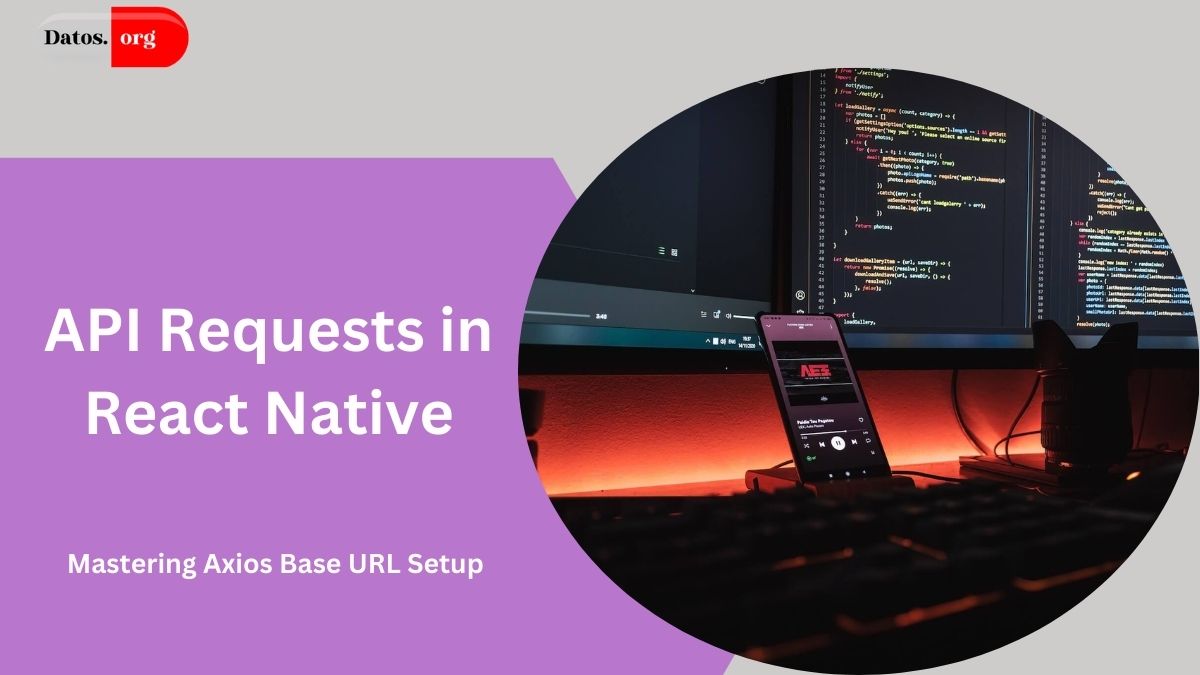In today’s mobile application development landscape, effectively managing API requests is vital. If you’re utilizing React Native, one of the best tools at your disposal is Axios.
This powerful HTTP client streamlines your API interactions and enhances the overall organization of your code.
Let’s explore why setting a base URL with Axios is a game-changer and how to implement it in your React Native applications.

- What is Axios?
- The Significance of a Base URL
- Configuring Axios in React Native
- Step 1: Install Axios
- Step 2: Set Up the Base URL
- Step 3: Executing Requests
- Various Types of API Requests
- Managing Errors
- Key Features of Axios for Effective API Management
- Benefits of Using Axios in React Native
- Best Practices for Utilizing Axios
- Improving Performance with Axios
- Conclusion
- People May Ask
- What is Axios used for?
- Why should I establish a base URL?
- How do I manage errors in Axios?
- Can I cancel Axios’ requests?
What is Axios?
Axios is a popular HTTP client that allows you to make requests from your JavaScript applications.
It’s designed for both Node.js and browser environments, making it versatile for various projects.
With Axios, you can perform operations like fetching data, submitting forms, and updating records easily.
MUST READ: Maximizing API Success: The Critical Role of Wireframing and Modeling
The Significance of a Base URL
When your app communicates with an API, you’ll often send multiple requests to the same server.
Instead of repeating the full URL each time, establishing a base URL in Axios simplifies your code.
This approach not only reduces redundancy but also makes your application easier to maintain. You only need to specify the unique parts of the URL, keeping your code clean and manageable.
Configuring Axios in React Native
Step 1: Install Axios
Start by adding Axios to your React Native project. This can typically be done using npm or yarn.
Step 2: Set Up the Base URL
After installation, you can import Axios into your project and create an instance with a base URL. This instance will be used for all your API requests, allowing you to focus on just the endpoint paths.
Step 3: Executing Requests
With your base URL set, making API requests becomes straightforward. For example, when you need to fetch user data or submit a form, you only provide the specific endpoint, and Axios automatically combines it with the base URL.
Various Types of API Requests
Using Axios, you can perform different types of requests:
- GET: Retrieve data from the server.
- POST: Send new data to the server.
- PUT: Update existing data.
- DELETE: Remove data from the server.
Managing Errors
Effective error handling is essential for a seamless user experience. Axios provides easy-to-use methods for managing errors, allowing you to log issues or display helpful messages when something goes wrong.
Key Features of Axios for Effective API Management
Here are some standout features that make Axios a top choice for managing API requests:
- Base URL Configuration: Define a base URL to streamline your requests.
- Interceptors: Modify requests or responses on the fly, helpful in adding tokens or handling errors.
- Promise-Based Architecture: Manage asynchronous operations effortlessly.
- Timeout Settings: Set time limits for requests to avoid hanging.
- Request Cancellation: Cancel requests that are no longer necessary, improving performance.
Benefits of Using Axios in React Native
- Cleaner Code: A base URL keeps your code organized.
- Simplified Error Management: Easily handle errors to enhance user experience.
- Flexibility: Axios allows seamless handling of tokens and authentication.
Best Practices for Utilizing Axios
To ensure your API requests are efficient, consider these recommendations:
- Always Set a Base URL: This keeps your code tidy and reduces repetition.
- Utilize Interceptors: They help manage requests and responses effectively.
- Implement Robust Error Handling: Prepare your app to handle API failures gracefully.
- Optimize Your Requests: Consider batching requests or limiting their frequency to reduce load.
Improving Performance with Axios
You can further boost your app’s performance by:
- Implementing Throttling: Limit the rate of API requests.
- Batching Requests: Combine multiple API requests into one to cut down on network traffic.
- Using Lazy Loading: Fetch data only when necessary to improve initial load times.
Conclusion
Using Axios to manage API requests in React Native is an effective way to streamline your development process.
By setting a base URL and following best practices, you can enhance the organization of your code and improve your app’s performance.
People May Ask
What is Axios used for?
Axios is a library for making HTTP requests in JavaScript applications, particularly useful for interacting with APIs in React Native.
Why should I establish a base URL?
Setting a base URL reduces redundancy in your code and simplifies API management.
How do I manage errors in Axios?
You can handle errors easily using Axios’s built-in methods, allowing you to log or display user-friendly messages when something goes wrong.
Can I cancel Axios’ requests?
Yes, Axios allows you to cancel requests that are no longer needed, which can help optimize performance.
Click here to learn more.